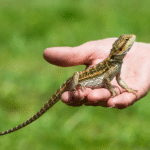Given the massive technological disruption pushing shoppers online, how are retailers finding growth in brick-and-mortar?
The answer is: triggering shopper impulsivity.
Today’s most successful retailers are using behavioral psychology to trigger impulsivity, which leads to more unplanned trips and an increase in spontaneous purchases once in-store. And it seems to be working. Business Insider Intelligence predicted that by the end of the holiday season, total U.S. retail sales will have increased by 3.8% to $1.008 trillion, which would make 2019 the first-ever trillion-dollar holiday season.
To dimensionalize how impulsivity works, I conducted a behavioral audit in two highly anticipated retail experiments: the Amazon 4-Star concept store and the new-and-improved Toys”R”Us.
What I found were two different shopping experiences that were both equally adept in their use of behavioral design and mindstate experiences to trigger impulse purchases. In this article, I’ll share my observations from each store’s strategy and offer a few takeaways for retailers.
Amazon
Upon entering the Amazon 4-Star store in Dallas, my first reaction was: Amazon is recreating its online experience in this store. And much like it is online, Amazon is good at getting you to impulsively add items to your basket. Here are just a few of the things I noticed in the store:
Wandering is encouraged. There is low lighting and no real path to go through the store. Much like Amazon’s website, you can get lost within. You’ll find a wide selection of product types, but unlike online, there’s only one option to choose from, which makes it difficult to compare against other brands.
Once you find something interesting, you’ll notice that under every item is a digital price tag reassuring you that you’re not going to make a mistake buying this product. It confirms that these are the same prices you’ll get online, shows the discount you get for being a Prime member, and displays the number of 4-plus star reviews the product got. (That’s why the store is called 4-Star.)
Finally, the checkout process was fast. There were no self-checkouts. The associate scanned my item, verified my Prime email address, charged my card on file and emailed me my receipt. I was in and out with no worries or regret.
The brand experience, aesthetic and shopping process are all designed around the “cautious security” mindstate: Minimize the chance of making a bad choice and experiencing regret for impulse purchases.
Toys”R”Us
Let’s compare this to Toys”R”Us. The new Toys”R”Us store offers a completely different shopping experience than Amazon. Whereas Amazon wants to recreate the online experience in-store, it’s clear that Toys”R”Us is using technology and retail theater to drive emotional arousal and impulse purchases.
The company is using high-tech cameras to monitor store traffic patterns and make assortment changes based upon shopper cadences. How long are shoppers spending in each area of the store? Which areas are creating excitement? These are the questions Toys”R”Us can now answer, and it allows them to focus their merchandising and adapt their footprint in-the-moment.
When you walk in, you’re treated to a master class in retail theater. Geoffrey, the company’s giraffe mascot, greets you at the door to take pictures for social media. The lights are bright, the music is high-energy and the layout is designed to funnel you into different experiences, like a Nerf range or a kinetic sandbox. Children and adults are encouraged to actively play with the toys, and employees will walk around and open packages up so kids can simply play.
There’s a wider assortment of products per category and much less of a focus on price. They want you to play, laugh and have a great time. They’re designing for emotional arousal in the hopes you’ll want to take this experience home with you. Only then are they looking to make the sale.
The brand experience, aesthetic and shopping process are all designed around the “optimistic engagement“ mindstate: Maximize enjoyment and excitement in an immersive environment.
Takeaways From Amazon And Toys”R”Us
Based on my audit of Amazon and Toys”R”Us, here are three tips for retailers looking for unique ways to drive impulsivity using a mindstate strategy:
1. Determine your behavioral strategy.
Either recreate your online experience to make your online and in-store experiences converge, or build a new, immersive experience. Try to do both and you’ll wind up in the morass where much of retail is today.
2. Design with that strategy in mind.
For example, Toys”R”Us wants to build emotional arousal in its stores, so it created mini boutiques in its footprint where playing and exploring is highly encouraged, then promise that you can bring this feeling home by buying the product.
Tip: Do this by first identifying the role of your store. In this case, it is to use the store as a testing ground for what experience is possible in your home. Then, design the store environment and shopper experience to facilitate that role.
3. Use technology and analytics to adjust your tactics in real-time.
It’s wise to use technology to understand shoppers in the moment and make adjustments instantly. Amazon, for instance, can match online to retail sales in real-time to make pricing decisions on their products, and since it uses digital pricing tags in its stores, it can instantly change those prices and run A/B testing on discounts.
Tip: This doesn’t need to be complicated. The technology could easily be stationing an associate to count the total number of people entering a section and dividing it by the total number of people buying a product in that section. This is your section conversion metric.
We’ll see if these retail experiments succeed, but from my perspective, both Amazon and Toys”R”Us are using behavioral design to help capture their share of the trillion-dollar holiday shopping season. How can your in-store experience be used to drive purchases?
Source : Forbes




